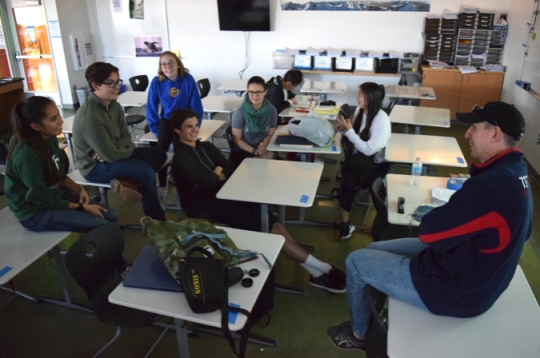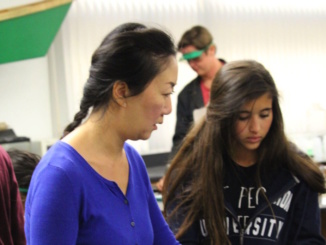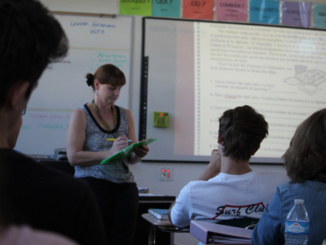
By Maysen Marolda
Staff Writer
Adult volunteers shadowed Mira Costa students Nov. 14-18 in order to assess factors leading to student stress. Based on interviews with counselors and district board members, it’s clear that although the Shadow Days provided insight into students’ daily lives at school, they fell short of accurately reflecting the root causes of student stress outside of their time on campus, a shortcoming that should be resolved before the next Shadow Day event in January.
Shadowers included volunteer Costa teachers, administrators and parents from the Social and Emotional Wellness committee. The 14 participating students either volunteered to be shadowed or were selected by Costa’s guidance counselors so as to represent different levels of rigor in academics and extracurricular involvement. Each adult shadower attended his or her student’s classes throughout one school day and received updates via text or email after school hours regarding commitments outside of school and schoolwork.
Check out this video on what one assistant principal learned after shadowing a student for one day.
Because observations of each student only lasted for one day, it is difficult to ensure that the given Shadow Day is reflective of the student’s average daily commitments, committee member and Manhattan Beach Unified School District Board of Trustees President Ellen Rosenberg said. As a result, the Shadow Days may have provided misleading and inaccurate feedback regarding student stress levels. If shadowers aimed to formulate a comprehensive picture of the challenges students face, then the students should have been shadowed for a whole week so that the shadower could observe a larger number of the student’s activities.
Once the students’ school day ended, the in-person shadowing ended as well, and the adult shadowers had no way of knowing whether students procrastinated in doing their work, therefore inducing their own stress, guidance counselor and committee member Santarosa said. If students procrastinated during or prior to their Shadow Day, it could have led to an increased amount of stress, showing inconsistent stress levels between the data reported and reality. The stress would have been accumulated through the student’s own behaviors, providing false impressions of stress students do not usually have.
Check out more information on Costa’s Social Emotional Health initiatives here.
Although Shadow Day is a helpful step toward evaluating student stress, it does not take all sources of the stress into consideration, such as competition from peers and pressure from parents or the community, all of which accumulate over time, Santarosa said. Since the evaluation does not provide a holistic picture of all students’ challenges, it cannot be considered effective in accurately informing observers. Therefore, it is difficult for the shadower to pinpoint the source of the stress based on one day of observation, which only encompasses a limited portion of the many potential student stressors.
The results of the Shadow Days unquestionably revealed that students are stressed about their work, Rosenberg said. Even though shadowing a single student for one day was not the most effective means of evaluating student stress, the week proved to be a positive experience, generating useful information that would not typically be available to the adults who participated in the activity.
Check out an article on NBC News on teen stress.
Furthermore, the district is also planning to hold another Shadow Day in January, Costa Principal Dr. Ben Dale said. Therefore, despite the fact that this Shadow Day fell short in fully accounting for all root causes of student stress, hopefully by the next one the district will adjust its methods to get the best insight in limiting student stress.
Shadow Day provided general feedback that Costa students are under a great deal of stress; however, student stress has already been rightfully recognized around the Manhattan Beach community, highlighted by the creation of the Social and Emotional Wellness Committee as an attempt to alleviate stress faced by students.
Although shadowing students for a day acknowledges the fact that teachers account for a portion of student stress, the process failed to address other factors, such as competition among peers and pressure from parents, that are significant forces in generating student stress.




Leave a Reply